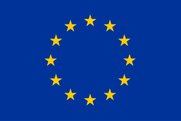NEEM Publications
Scaling the necessary financing for energy-efficient retrofits via energy-efficient mortgages or other financial products calls for a value chain of inputs. This value chain starts with a foundation of data about energy, real estate characteristics and the weather, all of which must be translated into finance-relevant insights for banks and their customers.
The NEEM project works along this value chain with several pilot banks and focuses on residential real estate limited to single-family privately owned homes. This paper, produced by the Green Digital Finance Alliance, outlines the current state of the supply of digital data available to banks in Sweden, Norway, and Denmark for the purpose of scaling up energy-efficient mortgages.
It looks mainly at the availability and readiness of data to be deployed by banks for two of the solutions proposed within NEEM:
- Use of data for initial screening of potential candidates in a mortgage portfolio for energy renovations
- Remote identification of the causes of energy inefficiencies (including lack of air tightness, insulation, or behaviours) which are insights to guide design of a renovation package for financing.
The data supply profile for each country is developed by describing data available to banks across the four main data categories, highlighting quality issues or data gaps; 1) energy consumption data; 2) energy production or energy source data; 3) building parameter data; and 4) weather data.
Specifically, we find that:
- Denmark’s data foundation is fairly well-developed and is ready for both NEEM cases, even though this will not result in a nationwide sample of the bank mortgage portfolios.
- Norway’s data infrastructure is ready for testing of both NEEM core solutions, although there will be specific data challenges to overcome. The magnitude is however yet to be determined.
- Sweden’s data foundation will need to be improved for testing of the two NEEM core solutions to be viable. We assess that identification from the bank mortgage portfolios of targeted municipalities will be needed, followed by discussions with the grid providers or adoption of an approach where end-users themselves enter data into a user interface.
Authors
Marianne Haahr, Executive Director at the Green Digital Finance Alliance
Søren Skov Bording, Managing Director at Center Denmark
Søren Bernt Lindegaard, Senior Project Manager at Center Denmark
Anders Bro Pedersen, Senior Developer at Center Denmark
Miriam Mazzeo, Data Scientist at Center Denmark
Relevant links



